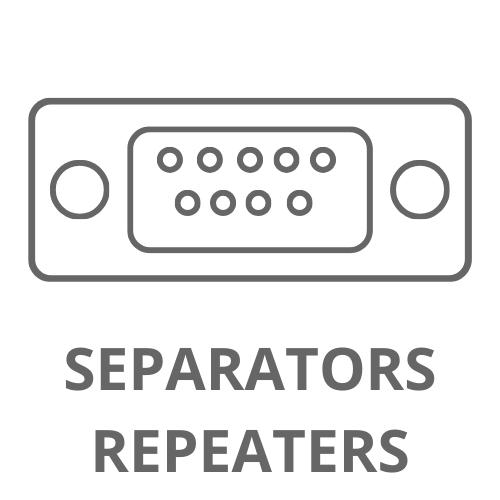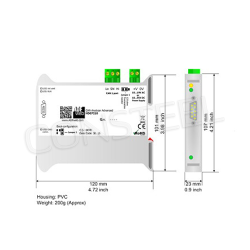CAN Analyzer and tester - Advanced diagnostic capabilities
CAN analysers and testers - indispensable diagnostic tools for CAN buses
CAN analysers and testers are advanced devices for monitoring, diagnostics and testing of the CAN (Controller Area Network) bus. Used in the automotive industry, industrial automation and IoT systems, they allow detailed analysis of CAN networks, which is crucial for ensuring the reliability and efficiency of communication systems. They allow users to quickly identify problems, monitor key network parameters and optimise network performance in real time.
These comprehensive tools allow users to communicate with CAN devices using a PC via USB, RS-232 or Ethernet ports. With the function of creating a virtual COM port, the analysers enable fast data transfer and integration with software such as CAN analyser, which provides full control over the functioning of the CAN network. Intuitive interfaces allow easy adjustment of operating parameters, which minimises implementation time and streamlines the diagnostic process.
CAN analyser software functionalities
The CAN analyser software, which is an integral part of our CAN analysers and testers, offers a wide range of diagnostic and configuration functions:
- CAN network mode selection - configure standard or extended CAN network types and adjust the transmission speed to network requirements.
- CAN network load monitoring - real-time data visualisation via an intuitive interface and LED indicators.
- Advanced operating modes:
- CANopen Monitor - visualisation of all CANopen frames, including node, type (SDO/PDO) and content.
- CAN Monitor - basic monitoring of CAN network communication.
- Network Manager - scanning network points, reading/writing CAN registers, and changing receiver ID states (pre-operational, operational).
- CAN Sender - sending CAN frames in cyclic mode or debugging selected frames.
- CANopen Filter - frame filtering for precise analysis and diagnostics.
- Load EDS file - ability to load EDS configuration files for faster device configuration.
Advantages of CAN analysers and testers
- Wide range of applications - suitable for monitoring and diagnosing CAN networks in industries like automotive, industrial automation, and IoT.
- Configuration flexibility - adjust parameters like baud rate, filters, and port configurations to suit specific needs.
- Precise diagnostic tools - gain detailed insights into CAN network performance to identify issues and optimise communication.
- Intuitive software - user-friendly interface simplifies configuration and operation.
- Support for advanced functions - enables detailed analysis and precise testing of CAN network communication.
Applications of CAN analysers and testers
- Automotive - testing ECUs, monitoring communication between sensors and controllers, and optimising vehicle CAN systems.
- Industrial automation - diagnosing and optimising CAN networks in production lines and industrial plants.
- IoT systems - integrating CAN-based devices in smart environments and remote management systems.
- HVAC systems - analysing and configuring CAN networks in heating, ventilation, and air-conditioning systems.
- Infrastructure modernisation - improving systems through diagnostics and fine-tuning CAN network parameters.
Why choose our CAN analysers and testers?
- Extensive diagnostic functions - modes like CANopen Monitor, Network Manager, and CAN Sender offer accurate network analysis and testing.
- Precision and reliability - indispensable for demanding automotive and industrial applications.
- Ease of use - intuitive CAN analyser software simplifies the diagnostic process.
- Versatility - compatible with various communication protocols and devices.
- Technical support and updates - professional support and regular software updates ensure continued compliance with standards.
Contact us
If you have questions about our CAN analysers and testers or need assistance selecting the right device, contact us. Our team of experts is ready to provide advice and support to help you find the best solution for your needs.




















